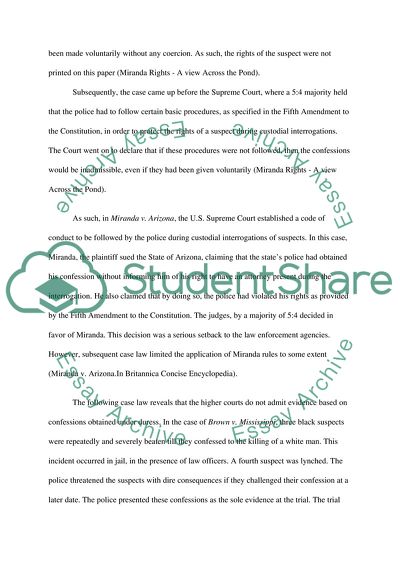Cite this document
(“A landmark case: Miranda v. Arizona Essay Example | Topics and Well Written Essays - 3500 words”, n.d.)
Retrieved from https://studentshare.org/social-science/1551573-a-landmark-case-miranda-v-arizona
Retrieved from https://studentshare.org/social-science/1551573-a-landmark-case-miranda-v-arizona
(A Landmark Case: Miranda V. Arizona Essay Example | Topics and Well Written Essays - 3500 Words)
https://studentshare.org/social-science/1551573-a-landmark-case-miranda-v-arizona.
https://studentshare.org/social-science/1551573-a-landmark-case-miranda-v-arizona.
“A Landmark Case: Miranda V. Arizona Essay Example | Topics and Well Written Essays - 3500 Words”, n.d. https://studentshare.org/social-science/1551573-a-landmark-case-miranda-v-arizona.


